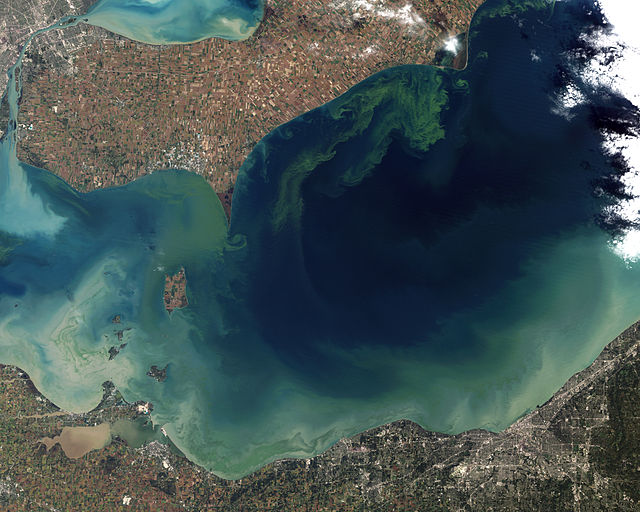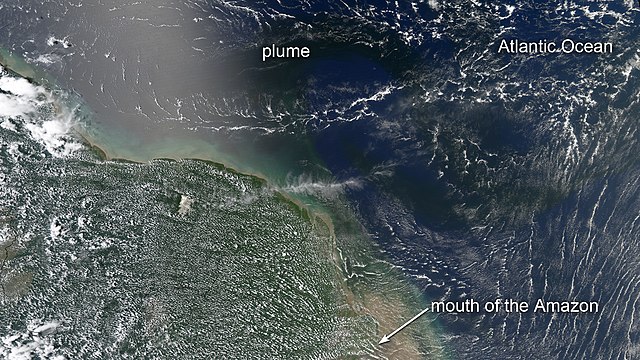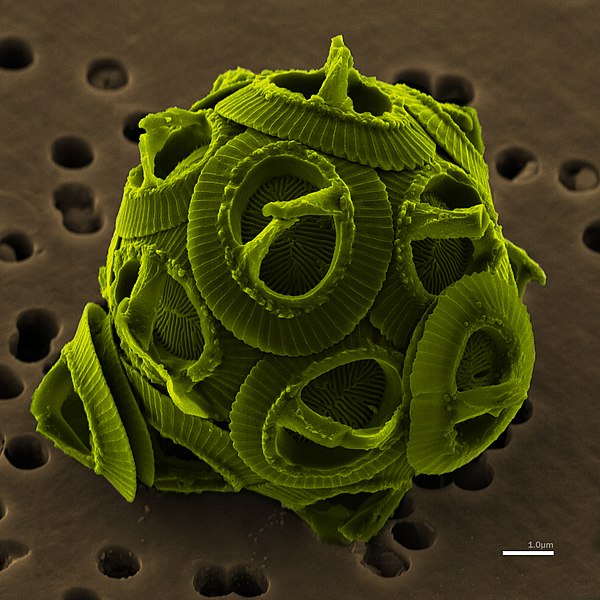An algal bloom or algae bloom is a rapid increase or accumulation in the population of algae in freshwater or marine water systems. It is often recognized by the discoloration in the water from the algae's pigments. The term algae encompasses many types of aquatic photosynthetic organisms, both macroscopic multicellular organisms like seaweed and microscopic unicellular organisms like cyanobacteria. Algal bloom commonly refers to the rapid growth of microscopic unicellular algae, not macroscopic algae. An example of a macroscopic algal bloom is a kelp forest.
A very large algae bloom in Lake Erie, North America, which can be seen from space.
Rivers, such as the Amazon, deposit nutrients from land into South America's tropical ocean waters, leading to thick blooms along the coastline.
Blooms flourish in a dark plume of nutrient-rich water pouring from the mouth of the Amazon River, as seen by NASA's Aqua satellite.
Coastal phytoplankton bloom change 2003–2020
Algae are any of a large and diverse group of photosynthetic, eukaryotic organisms. The name is an informal term for a polyphyletic grouping that includes species from multiple distinct clades. Included organisms range from unicellular microalgae, such as Chlorella, Prototheca and the diatoms, to multicellular forms, such as the giant kelp, a large brown alga which may grow up to 50 metres (160 ft) in length. Most are aquatic and lack many of the distinct cell and tissue types, such as stomata, xylem and phloem that are found in land plants. The largest and most complex marine algae are called seaweeds, while the most complex freshwater forms are the Charophyta, a division of green algae which includes, for example, Spirogyra and stoneworts. Algae that are carried by water are plankton, specifically phytoplankton.
Image: NSW seabed 1
Image: Водоросли пресноводного водоема 2
False-color scanning electron micrograph of the unicellular coccolithophore Gephyrocapsa oceanica
The kelp forest exhibit at the Monterey Bay Aquarium: A three-dimensional, multicellular thallus








